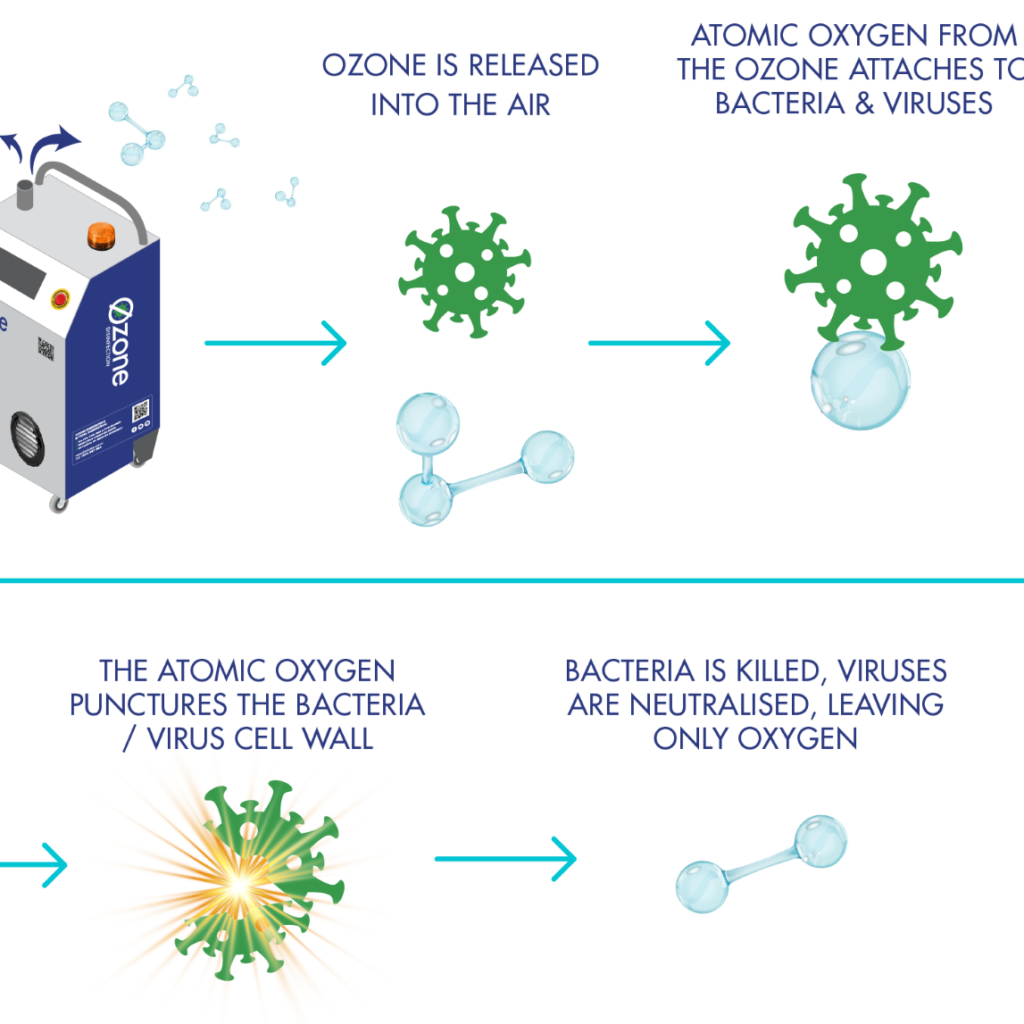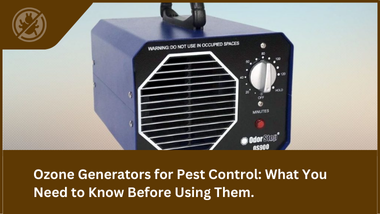Are you facing a stubborn pest infestation? You have likely come across a variety of pest control solutions from sprays and traps to more unconventional methods like ozone generators for pest control.
Ozone generators for pest control are gaining attention as a chemical-free approach to pest control. But how effective are they? And more importantly, are they safe to use in your home?
In this post, we’ll explore what ozone generators are, how they work, their potential benefits and risks, and whether they’re the right solution for your pest problem.
What is an Ozone Generator?
An ozone generator is a device that produces ozone (O₃), a molecule made up of three oxygen atoms. Ozone is a powerful oxidizer, meaning it reacts with and breaks down pollutants, bacteria, mold, and even some pests.
While ozone naturally occurs in the atmosphere, ozone generators for pest control artificially create it to disinfect and eliminate unwanted contaminants indoors.
How Do Ozone Generators Work for Pest Control?

Ozone generators work by releasing ozone into the air, which can penetrate surfaces and reach areas that are difficult to clean. When the ozone comes into contact with pests, it can damage their respiratory systems, leading to their death or repelling them from the treated area.
Ozone generator has been shown to be effective against insects like cockroaches, fleas, and bed bugs, as well as smaller pests such as mites.
Ozone’s high oxidation potential can break down the organic molecules that pests rely on for survival. Additionally, it helps to eliminate odors and allergens in the environment, reducing the attraction of pests to your home.
Are Ozone Generators Effective for All Types of Pests?

While ozone generators for pest control may help reduce the presence of some pests, they aren’t a one-size-fits-all solution. They are most effective against small pests like mites, fleas, and insects that hide in cracks and crevices.
Larger pests such as rodents, ants, or cockroaches may not be as effectively controlled with ozone alone.For pests that are hardy or can flee to other areas, like roaches, an ozone treatment might not be enough to fully eradicate them.
In these cases, ozone can work well as part of an integrated pest management (IPM) plan but not as the sole method.
Safety Concerns When Using Ozone Generators
One of the most important factors to consider before using ozone generators for pest control is safety. While ozone is effective at killing pests and bacteria, it can also be harmful to humans and pets when inhaled at high concentrations.
Exposure to elevated levels of ozone can cause respiratory irritation, coughing, and chest discomfort. Long-term exposure could lead to more serious health problems, including lung damage.
Because of these risks, it’s critical to only use ozone generators in unoccupied spaces. This means that during the treatment process, all people, pets, and plants should be removed from the area.
After treatment, the room or home should be well-ventilated for several hours before it’s safe to re-enter.
Benefits of Ozone Generators for Pest Control
Despite the safety concerns, ozone generators do offer some benefits as a pest control option:
- : Chemical-Free Pest Control: Ozone generators offer an alternative to traditional chemical pesticides, which can leave residues in your home. This makes it appealing for individuals looking for eco-friendly pest control methods.
- Odor Removal: In addition to killing pests, ozone helps remove foul odors caused by infestations, such as the smell of cockroach or rodent droppings.
- Disinfection: Ozone can also kill bacteria, viruses, and mold in the air and on surfaces, making it a multi-functional tool for cleaning your home.
- Hard-to-Reach Areas: Ozone can travel into nooks, cracks, and crevices that are difficult to treat with conventional pest control products.
Risks of Ozone Generators for Pest Control
While ozone generators for pest control have their advantages, they also come with some notable downsides:
- Health Risks: As mentioned earlier, ozone can be harmful to humans and animals. Ensuring proper ventilation and re-entry protocols is essential to minimizing health risks.
- Limited Pest Control Scope: Ozone is not a guaranteed solution for all types of pests. While effective for small pests and insects, larger infestations or more resilient pests may not be eliminated by ozone alone.
- Damage to Materials: Ozone is a strong oxidizer, which can damage certain materials in your home, such as rubber, plastics, and fabrics. Overuse or improper use of an ozone generator could lead to damage to furniture or other items.
- Cost: Ozone generators can be expensive to purchase or rent, and repeated treatments may be necessary for full pest control, which adds to the overall cost.
How to Use Ozone Generators Safely
If you decide to use an ozone generator for pest control, follow these safety guidelines to minimize the risks:
- Vacate the Premises: Ensure that all people, pets, and plants are out of the area before running the generator.
- Seal the Space: Close all windows and doors to the area being treated so the ozone can concentrate in the space for maximum effectiveness.
- Run for the Recommended Time: Follow the manufacturer’s instructions for how long to run the ozone generator. Do not overuse the device, as too much ozone can lead to unnecessary exposure risks.
- Ventilate Thoroughly After Use: Once the ozone treatment is finished, open windows and use fans to ventilate the room. Wait until the ozone has dissipated before re-entering the space.
- Follow Up with Traditional Pest Control: In some cases, additional pest control methods may be necessary to fully eliminate the infestation. Consider combining ozone treatments with traps or professional pest control services for a more comprehensive approach.
Conclusion
Ozone generators provide an innovative, chemical-free option for managing certain types of pests. While they have notable benefits, such as reaching difficult areas and removing odors, they also come with risks—primarily to human health and household materials.
Before using an ozone generator, it’s essential to weigh the pros and cons, and ensure that safety precautions are followed to protect your family and pets.
For best results, consider consulting with a pest control professional who can help you determine whether an ozone generator is the right choice for your specific pest problem.
